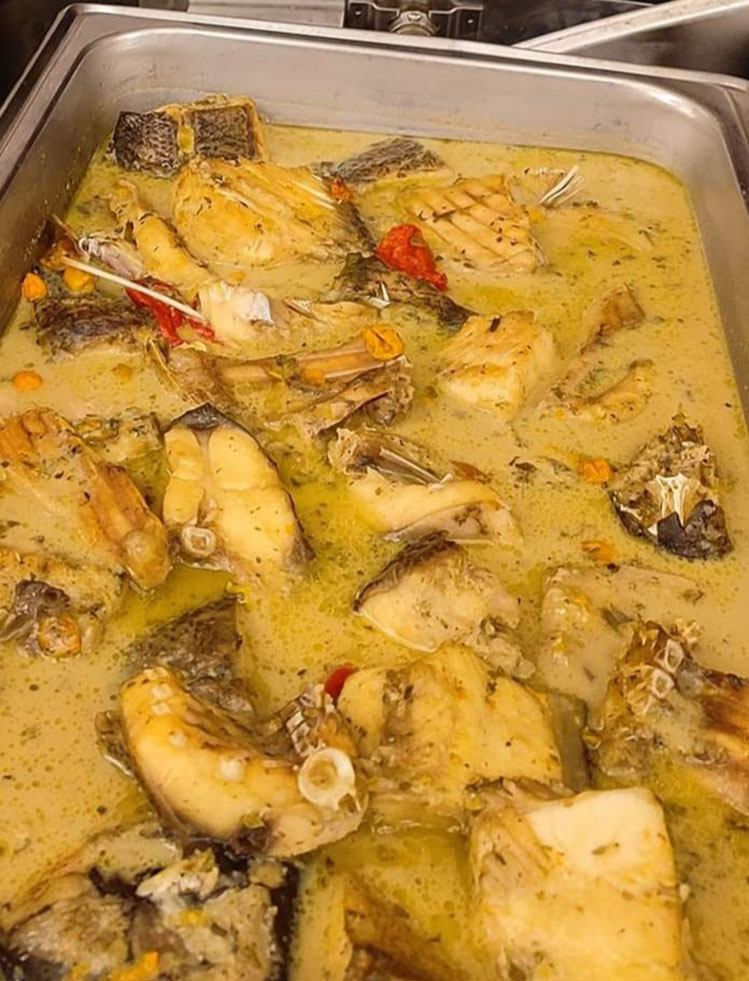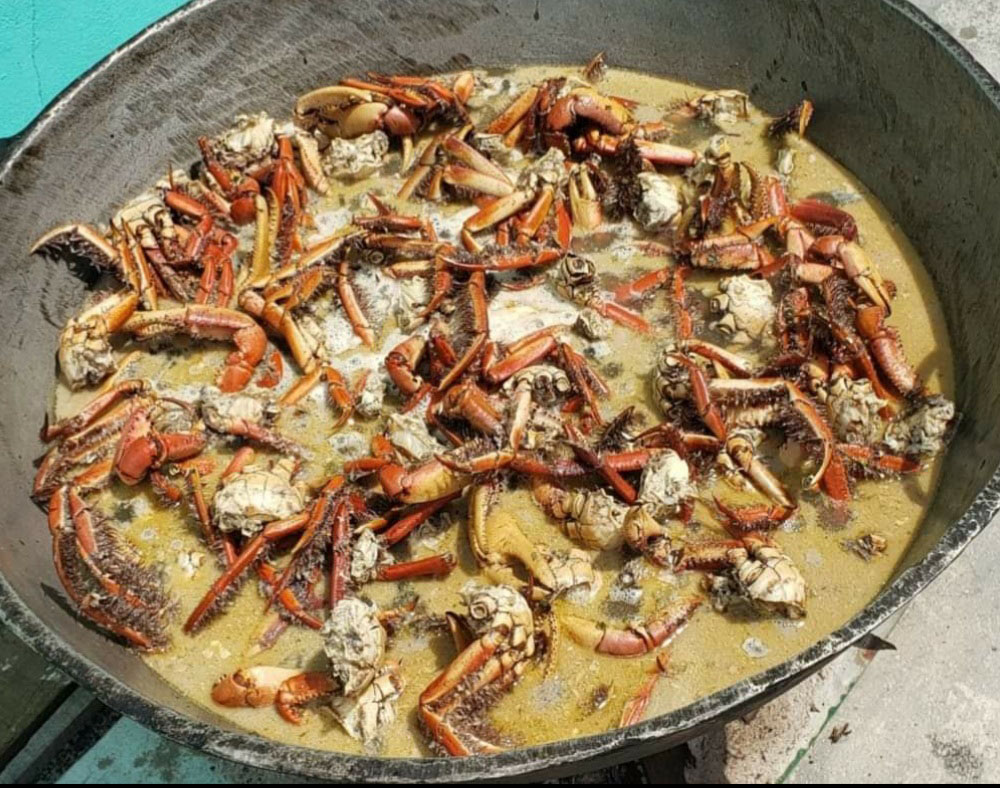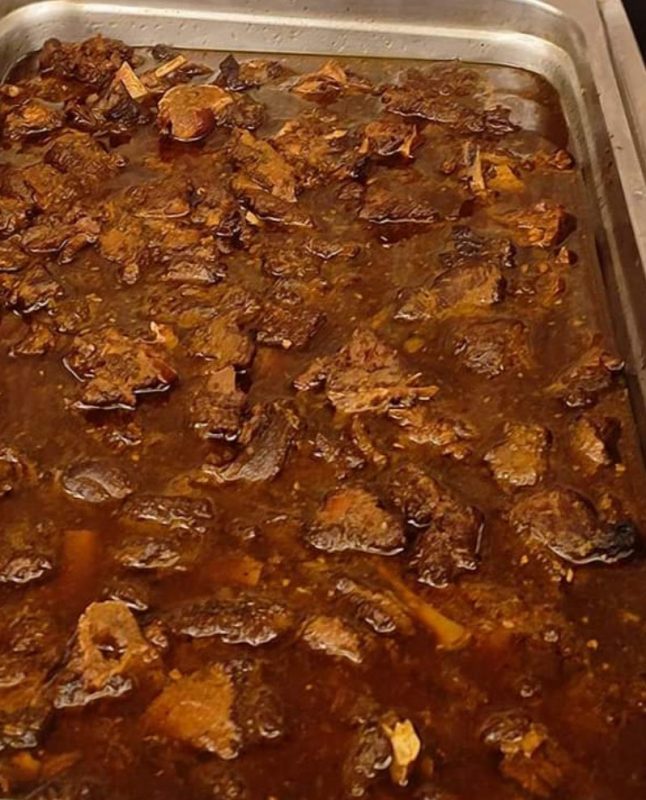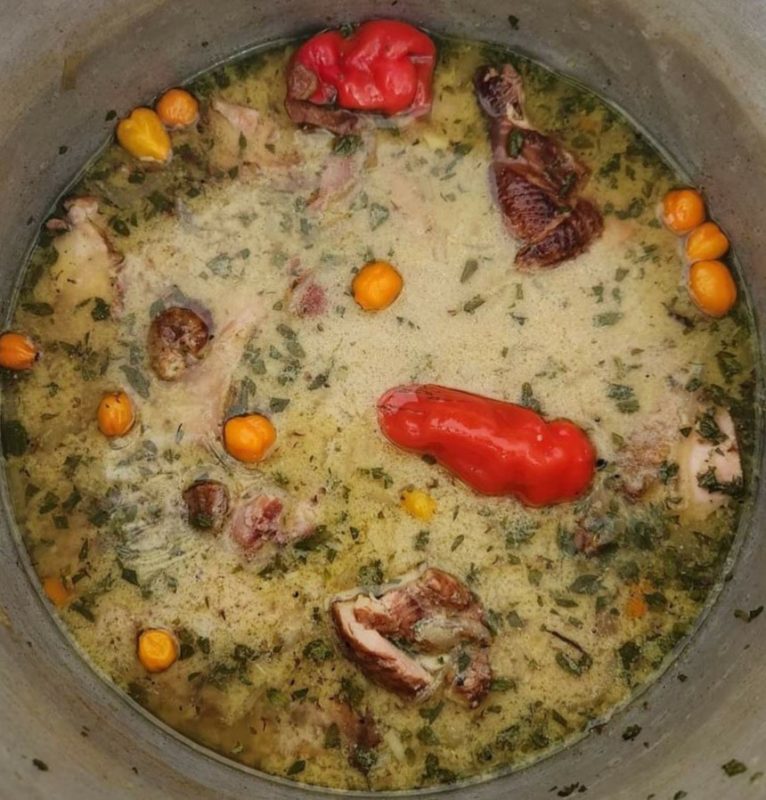By Miranda La Rose
I was 11+ years, then a first-year student at St Joseph High School, Georgetown in 1970, when I learnt that pepperpot cooked with cassava cassareep as a main ingredient, was a Christmas morning breakfast staple in many households in the city and the coastland.
Coming from Santa Rosa, Moruca, Region One (Barima/Waini), when my classmates asked me about having pepperpot for breakfast on Christmas morning all I could think about was ‘ha’chikupero’ the hottest pepperpot made by our Lokono (Arawak) people in Santa Rosa. That was my first school term in the city. I wondered how having ha’chikupero was even possible for breakfast among city residents.
What was so special about cassareep and pepperpot for Christmas morning? I couldn’t understand. For many indigenous families, pepperpot is an almost every morning meal. Then I learnt that the pepperpot cooked in the city and the coastland used cassareep as the stewing ingredient. It wasn’t that I didn’t know about the cassareep pepperpot. We used cassareep in the home only when there was no cassava water or ‘yaray’ as it is also called for sauces.
My paternal grandfather, the late Albert ‘Bertie’ La Rose, in my opinion, cooked the best pepperpot I have ever eaten. My pepperpot is good if I say so myself but his was simply the best. When I was in secondary school, I looked forward to when he came to Georgetown and cooked pepperpot with beef, cow heel and pork so I could eat pepperpot and cassava bread to my heart’s content. He never waited for Christmas to cook a cassareep pepperpot whether it was with morocut or gilbacker or the common catfish.
While I know of many types of pepperpot based on the meat or fish used in cooking, the people of Santa Rosa and in most parts of Region One have five or six types of cassava-water based pepperpots from hot pepper being burst in a pot or just allowed to simmer to give the pot a flavour without being burst.
Processing cassava root
Before I continue to name the pepperpots I know about in the Lokono tradition, it should be understood that cassava cassareep is made from the juice extracted from the bitter cassava which is cyanide-laced. The bitter cassava may contain as much as 400 mg of cyanide per kilogramme. During the various stages of processing 80 to 95 per cent of the cyanide is lost. Fermentation, boiling, and ensiling are efficient techniques for removing cyanide from the cassava water and the cassava flour also known as ‘cassava meal’ or ‘mealie’.
Processing the bitter cassava in the traditional household includes scraping, grating and straining the juice out of the cassava meal in a matapee (an elongated tubular strainer made by locals from the ‘mucru’ plant). When the juice or cassava water is settled and separated from the starch, it is used for the many pepperpots the Lokono household may use, as well as to make cassareep which is a source of income for many.
Ha’chi
Ha’chikupero or ha’chi was once upon a time a dish in every household reserved mainly for the elderly. Any pepper and any meat is put in that pot. A ha’chikupero pot could remain for as many weeks as possible with additional meat, cassava water and different varieties of pepper added to replenish. It has to be reheated every day at mornings and at nights so it never spoils.
Any meat – tapir (bush cow), wild hog, labba, acouri, beef, pork, any sweet water or sea fish, a combination of different meats or different types of fish may be cooked in the ha’chikupero.
In my home in the city, I cook pepperpot whenever I feel like it. Cassareep is an ingredient found in my home throughout the year. I use cassareep to marinate certain stews.
As my sister Sharon and my cousins Graham Atkinson and Roxanne Adrian said, Indigenous People of Moruca could have as many as three different types of pepperpot on Christmas morning or every day for that matter.
Kadakura
Kadakura is made from the cream or ‘espuma’ (Spanish for froth) of the cassava water or ‘yaray’ when heated. The cream is extracted and placed in a separate pot. That is used as a sauce for cooking any meat or fish. It is one of the more flavourable of Indigenous pepperpots and a favourite of mine. The espuma is sold every Saturday at the Kumaka market in Santa Rosa and to get a bottle the shopper has to go to the market early or there would be none.
The remaining cassava water without the cream is what is used to make other sauces or boiled further to become the syrupy cassareep.
Kadakura is mostly cooked with whole pepper and lots of fine leaf thyme. The boiled but unburst pepper adds a rich mouth-watering flavor to the dish. Since children are fed from this pot it is perfect for the entire family. Sometimes, very little pepper is used in kadakura or pepper from the ha’chikapero, ‘keheli’ or ‘kehelikota’ is added.
The first time I took my youngest daughter, Noelle (who was born and bred in Georgetown) to Santa Rosa at about seven years old and gave her the fish kadakura to eat, she turned away and said she did not want it. Encouraged to try it, she ate. When she was finished eating she asked, “Could I have some more soup?” There was no more to give her.
I do not know if kadakura is the same as ‘tuma’ a cassava sauce dish prepared by the Akawaios and Patamonas but the tuma that I ate in Region Seven (Cuyuni/Mazaruni) was not as creamy as the kadakura cooked in Region One. I asked around if the two were the same but no one gave me answers.
‘Keheli’ or ‘yaray’
For many years until this week, I thought that keheli and kehelikota were the same. No, they are not. Keheli is the ‘yaray’ or fresh cassava water boiled to make a sauce without extracting the ‘espuma’. It is also a family dish from which every member of the family partakes. Like the kadakura, pepper may be placed in the pot but not burst so that everyone in the family could eat from it.
As a child, I tried eating all types of pepperpots with varying levels of pepper heat. I also recall when other family members did their cassava work we waited to ask them for some cassava water and they gladly gave. The cassava water in its varying forms was never sold as it is today.
As I write I am relying a lot on my memory. I asked two young people if they knew what keheli and kehelikota were. I was not surprised they did not know. I recalled my cousin the late Sister Theresa La Rose telling me about keheli and kehelikota, which I thought I knew but which I clearly misunderstood. She had said, “You must know your Amerindian foods and never be ashamed of them.” I hope Sister is smiling at me from above while I write about these very foods.
Kehelikota
Kehelikota is the dish that is cooked with any meat from the liquid that remains when the espuma is extracted from the cassava water.
A lot of thyme is used in the preparation of any of the pepperpots. In my late maternal grandmother’s and mother’s home, the herb, culantro also known as bandanya or chadon beni was added especially for fish-based foods. I continue that tradition.
And while the kehelikota is not creamy like the kadakura, the toasted cassava dust left on the baking pan after baking the cassava bread may be added to the sauce to thicken it and give the dish more flavour.
Partially roasting chicken before cooking it in any of the sauces or pepperpots gives it an added unique flavour.
Any meat whether it is fresh fish or fresh meat, smoked fish or smoked meat, salted or corned meat may be cooked in any of the pepperpots.
Kwaharo
I had forgotten about ‘kwaharo’ but my cousin Graham reminded me. Kwaharo is a very spicy cassava water pepperpot in which parts of the crab including the crab belt aka ‘wayuko’ is cooked. It is found mainly during the April and August crab seasons.
As a child I recall seeing my great grandmother Julia Torres bent over her fireside, tending to her kwaharo and hoping she would give me some. She never disappointed.
The side dish for all the pepperpots in the home of Indigenous People in Moruca is mainly cassava bread, especially the fresh thick ‘arasoka’ while homemade bread is eaten nationwide with the cassareep pepperpot.
With the exception of kwaharo any meat could be cooked in the other sauces.
Anyone knowledgeable in the Arawak language may correct me if I am wrong. I wrote mainly from a Lokono (Arawak perspective).









